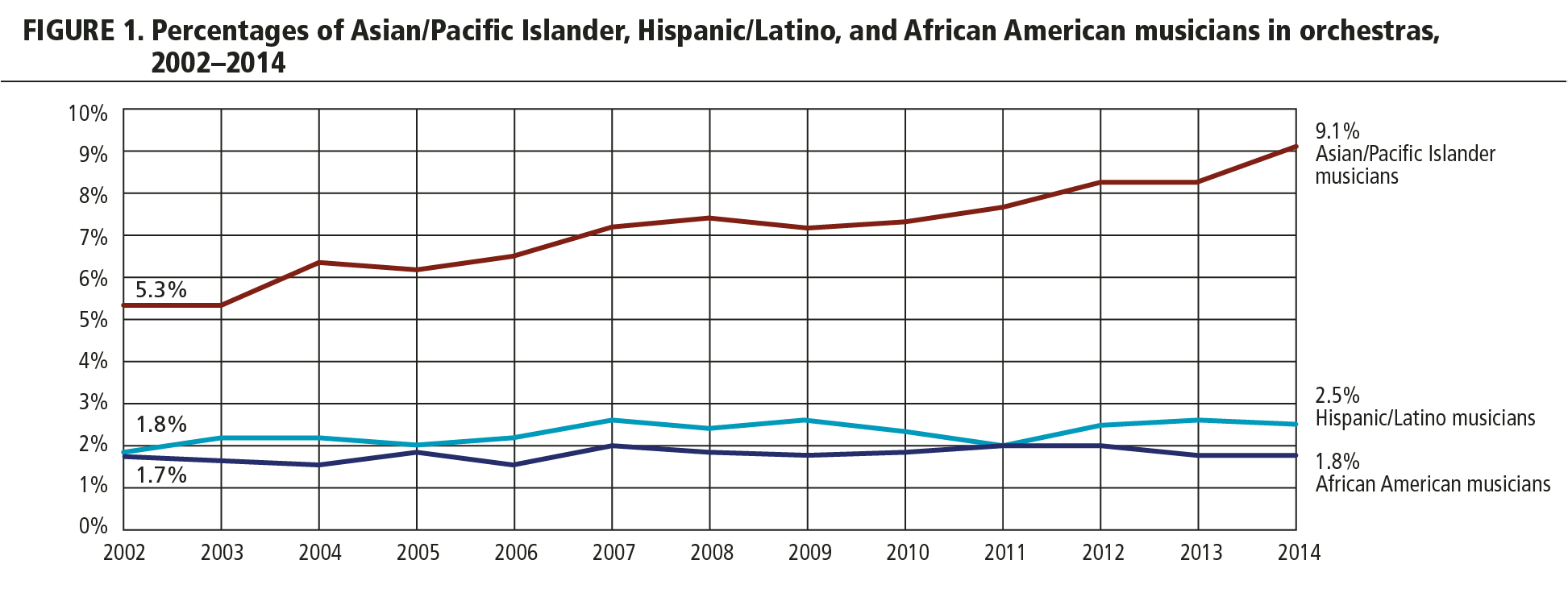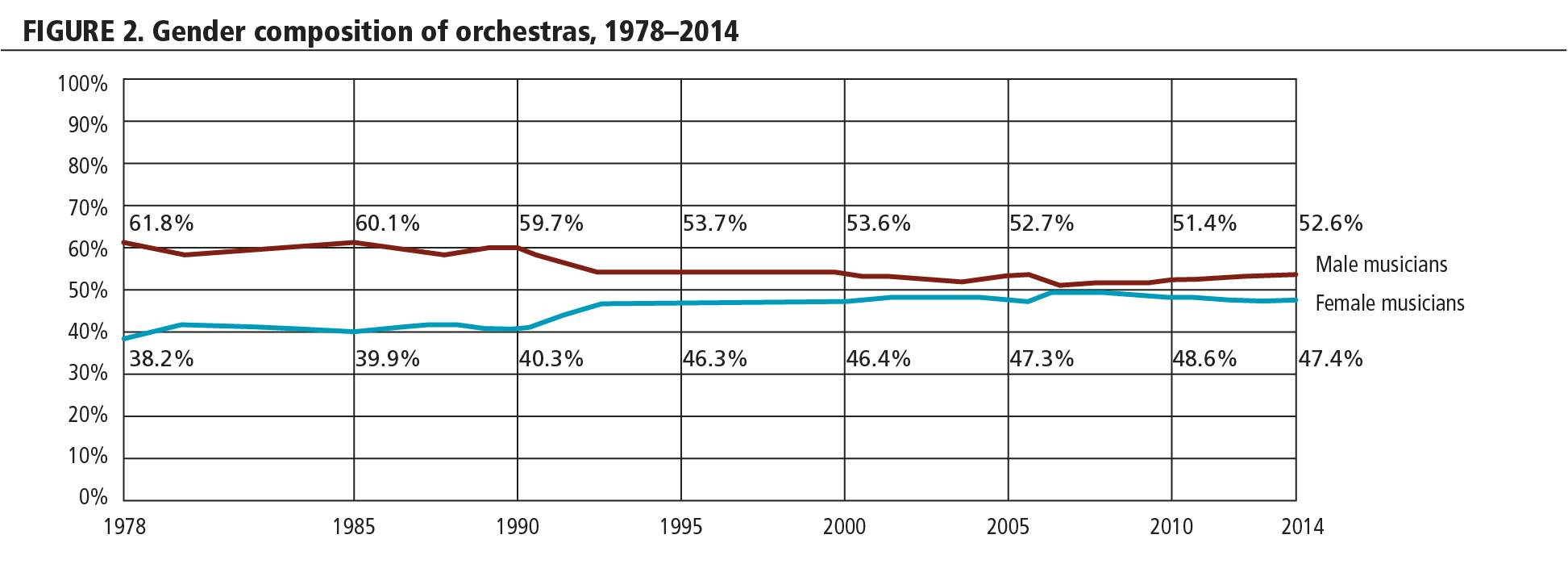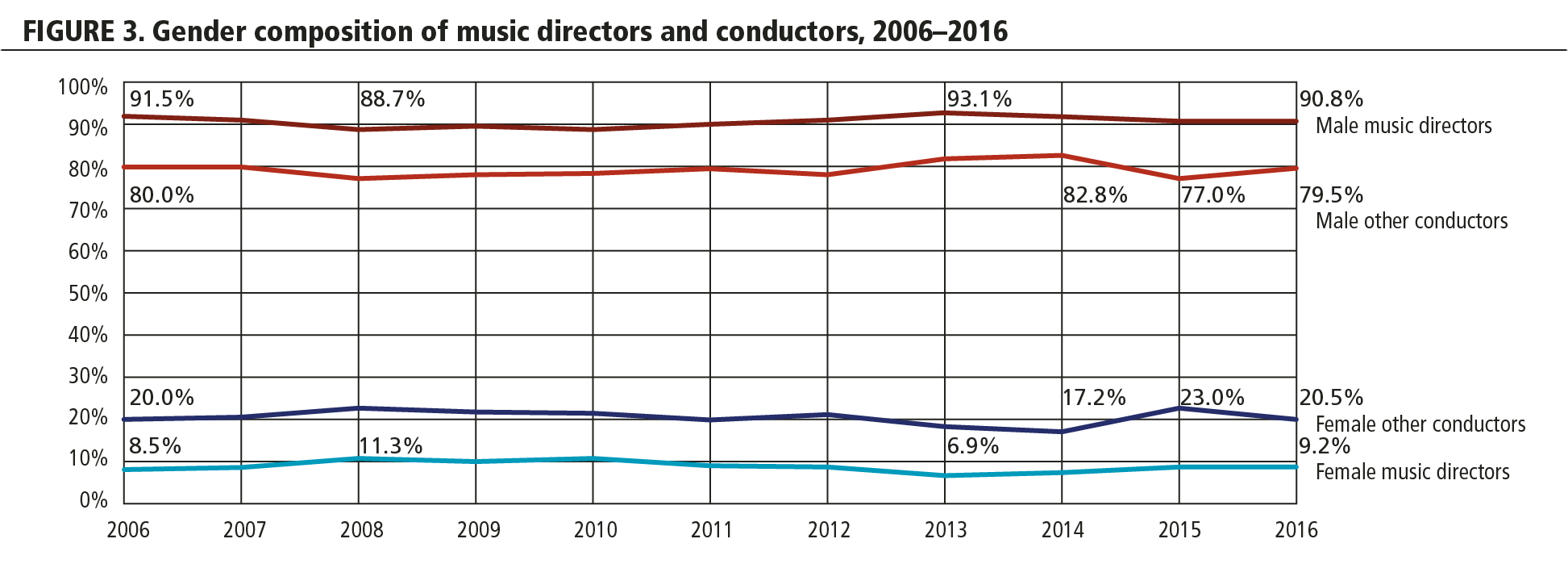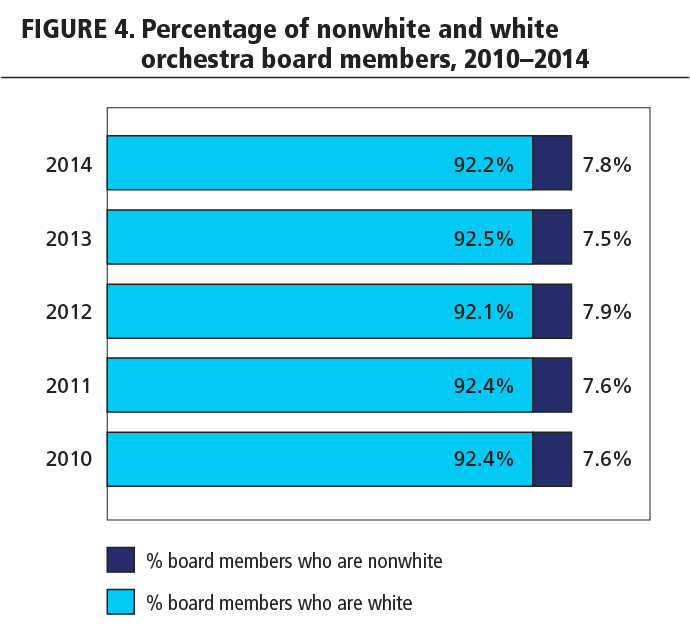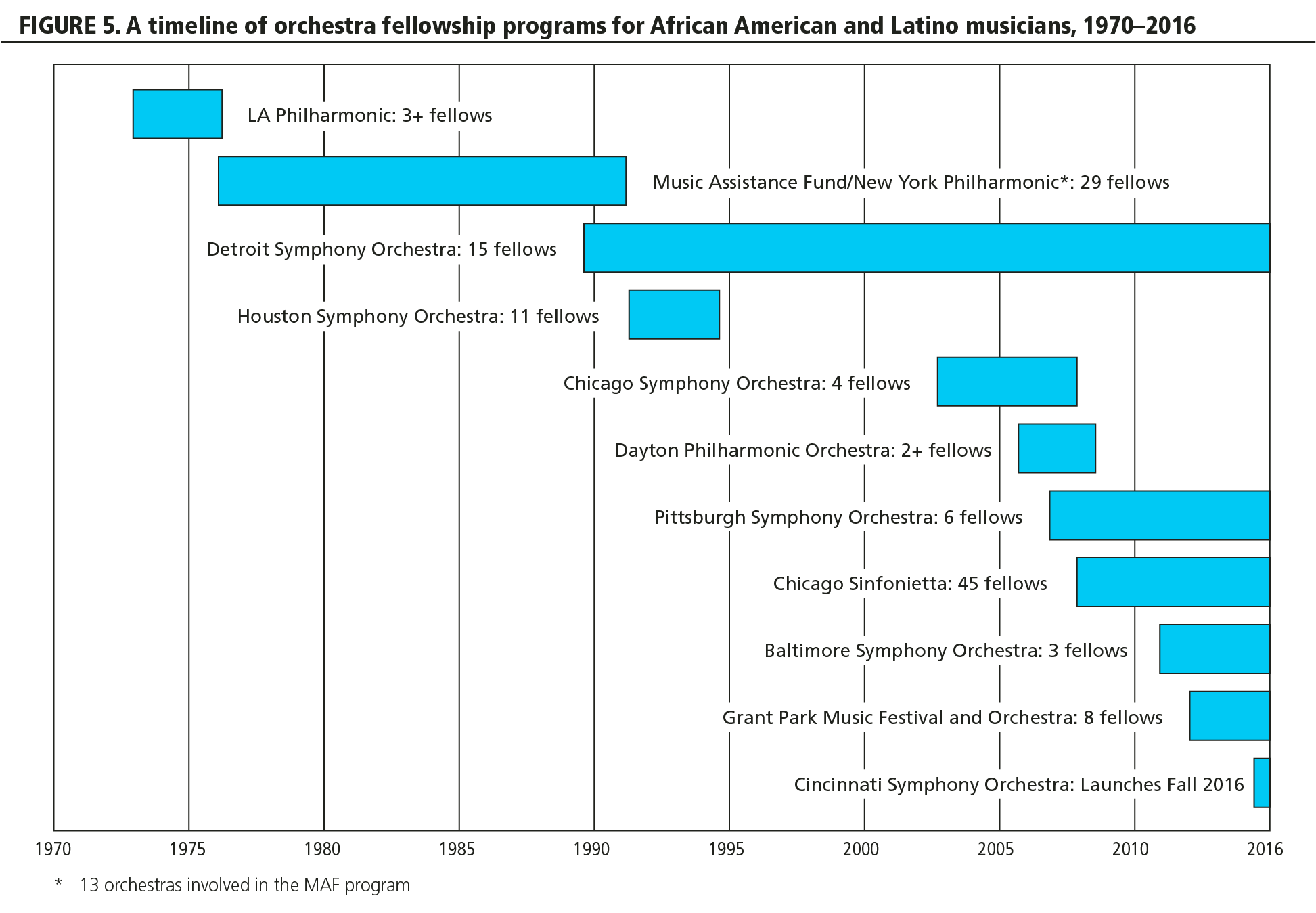A New Will to Confront Homogeneity in American Orchestras
The League of American Orchestras’ upcoming national conference in Detroit falls just days before the fiftieth anniversary of the 1967 Detroit uprising, the largest urban disruption in America since the Civil War. According to Detroit Symphony Orchestra (DSO) president Anne Parsons, the 1967 riot was the context for the orchestra’s fellowship program for African American musicians. And it no doubt informed the two Michigan state legislators who made state funding to the Detroit Symphony contingent upon the hiring of an African American musician without an audition, which the DSO did in 1989 during Deborah Borda’s tenure as CEO.
Overcoming decades of discrimination in orchestras is as complicated and multidimensional as it is for any sector. Now, with the rise of white nationalism, with debates about the limits of “identity politics” as a galvanizing ideal, and with the continuing Black Lives Matter movement, the subjects of race, ethnicity, gender, and class are more urgent than ever and taking center stage for many orchestras, especially those in urban centers.
The League began to reprioritize diversity and inclusion in 2011, beginning with a self-assessment of its board’s diversity and inclusion. The findings prompted a searching and difficult conversation among board members and staff, leading to the formation of a diversity task force, which has since become a full-fledged standing committee. With expert leadership provided by board members Robert Wagner, principal bassoon, New Jersey Symphony Orchestra; Anthony McGill, principal clarinet, New York Philharmonic; Aaron Flagg, chair and associate director, Juilliard Jazz; and Sphinx founder Aaron Dworkin, among others, the committee provided strategic direction for the League’s ensuing work internally as well as in service to its members.
We were determined to elevate the issue of diversity and inclusion (and eventually equity) among our members by aligning and coordinating our capacities to convene, to inform, and to generate and curate knowledge and learning. Our goals were to illuminate the issues, encourage candid conversation, introduce promising practices from in and outside the field, and catalyze action. The past twelve months have seen the convergence of much of this activity.
In December 2015, the Andrew W. Mellon Foundation and the League were co-conveners of a two-day meeting to attempt to understand the barriers to and lay the groundwork for action to increase participation of musicians from underrepresented communities. The meeting was attended by leaders in higher education, community music schools, youth and adult orchestras, and many musicians of color. Among the meeting outcomes were a number of potential strategies that could help “move the needle.” In a subsequent convening of the group that kicked off the League’s 2016 conference, the League established five working groups, each charged with creating and implementing action plans to tackle one of the strategies that emerged from the December meeting.
Two of the working groups — one devoted to developing a national network of mentors; the other, a national center for resources and support for musicians auditioning — have already found institutional homes, initial funding, and considerable traction. The other groups — on parent and family resources, the music education pipeline, and board and staff diversity — are all making progress.
The League’s 2016 conference in Baltimore, “The Richness of Difference,” was focused entirely on diversity, bringing forward numerous voices new to orchestras, including Dr. Earl Lewis, DeRay Mckesson, Andrés Tapia, and Edwin Torres. Among the highlights was a stirring keynote by civil rights leader and congressman Elijah E. Cummings, of Maryland’s Seventh District, who described how poverty had prevented him from pursuing his musical ambitions as a child. He said, “This wonderful organization decided to have a conference and look at the whole issue of diversity, making sure all of our children — all of our people — are part of what orchestras do. I came to tell you what you already know; diversity is not a problem — it is our promise.” The conference also provided an essential forum for learning about emerging designs for diversifying orchestras from the Cincinnati Symphony, Nashville Symphony, and Houston Symphony, among others.
To support the increasing momentum for action in the field, the League undertook two studies to create a fact base and add insight into past efforts to diversify the orchestral workforce. The first, “Racial/Ethnic and Gender Diversity in the Orchestra Field,” with research and analysis by Dr. James Doeser, provides a comprehensive picture of the demographic composition of orchestras: musicians, conductors, board members, and staff. The report looks back over nearly four decades of orchestra demographics data to present an analysis intended to promote learning among orchestra stakeholders and inform public dialogue.
Not surprisingly, the data demonstrate that the proportion of African American and Hispanic/Latino musicians remains extremely low and largely unchanged. There has been a large proportional increase, though, in musicians described in our data set as being from Asian/Pacific Islander backgrounds.
It is significant to note, however, the differences between larger budget orchestras ($2.1M and up) and smaller budget orchestras. Specifically, the percentage of musicians from African American and Hispanic/Latino backgrounds employed by smaller budget orchestras is double the percentage of those employed by larger budget orchestras. This finding opens up an important area for further investigation.
The gender mix of instrumental musicians has changed noticeably since 1978, the earliest year of digitized data that the League currently holds on this topic. The most significant finding here is that the gender gap narrowed in the early 1990s, with women musicians making up between 46 percent and 49 percent of the total musician pool in the two decades since. Many attribute this improvement to the advent of screened auditions.
Despite some recent high-profile appointments of women conductors, the gender mix of conductors appears to have remained unchanged from 2006 to 2016, according to data taken from the League’s annual salary survey. The ratio of male to female music directors and all other conductors has remained constant at around 10:1 and 4:1, respectively, and it is notable that women conductors are twice as likely to be found in “other conductor” positions than in the higher-status, higher-visibility role of music director.
Perhaps the most vexing data point is the lack of diversity on orchestra boards. Since 2010 the percentage of board members described as being African American, Latino/Hispanic, Asian/Pacific Islander, American Indian/Alaskan Native, or other nonwhite has hovered at just under 8 percent, including 3 to 4 percent African American and 1 to 2 percent Hispanic/Latino representation. For comparison, a national survey by BoardSource found that the representation of nonwhite people on nonprofit boards across the United States had increased from 16 percent in 2010 to 20 percent in 2014.
The lack of diversity on boards is no doubt related to the lack of alignment within orchestras when it comes to matters of diversity, as illustrated by the League’s second diversity study this year, “Forty Years of Fellowships, A Study of Orchestras’ Efforts to Include African American and Latino Musicians.” Coauthored by Nick Rabkin and Monica Hairston O’Connell, the study is an in-depth examination of orchestras’ past efforts to diversify their musician ranks with fellowships for African American and Latino musicians. These fellowships have been the principal vehicle for addressing the homogeneity of the orchestral workforce over the past forty years. With the renewed energy in the field, we believed it was essential to equip our members with the lessons learned that could be applied to their present-day and future work in diversity and inclusion through analysis of the impact of participation on the lives of the fellows who undertook them, and of the factors influencing their experiences.
One of the key findings of the study was that efforts fall short when all stakeholders are not aligned. Rabkin and O’Connell describe alignment as having two basic components: “consistency and synergy across all the organization’s goals and plans and strong links between organizational goals and the personal goals of employees.” Many fellows reported that often the musicians, staff, board, and audience did not seem to know why they were there, encountering indifference and in some cases resentment. In the words of one alum, “I was treated definitely as a fellow — not a fellow musician. There were different dynamics going on. Some people appreciated what the orchestra was doing [with the fellowship], some did not. Some couldn’t care less about this.”
Detroit Symphony CEO Anne Parsons, reflecting on the importance of alignment, commented: “The fellowship must be integrated into the core of the orchestra’s program so it is not out there on the margins. It needs to be owned by the musicians and supported by the board and the staff.” Rabkin and O’Connell conclude that alignment is the result of struggling with the issue of diversity and that struggle should be around taking practical steps aimed at progress.
Fellows did, however, develop their musical skills: the following comment was typical: “The experience was equivalent to getting an advanced degree in orchestral playing. Even just sitting in the section was great. Needing to match those people! I can still draw on that! I can think of which one I want to sound like and can use that to change the way I play. Kind of intuitive . . . a tone color, or a particular style.”
Reflecting on his experience running the Music Assistance Fund/New York Philharmonic fellowships from 1986 to 1992, Daniel Windham, now director of arts for the Wallace Foundation, made a fascinating observation that gets at another critical challenge for making fellowships work. He noticed that “orchestras’ rapid production of polished concerts week after week conflicted with the patient process of teaching and learning that are the hallmarks of good education. The volume of rep that changes weekly doesn’t allow time for reflection and refinement. A few players might be able to keep up, but more are likely to need more time. A season isn’t a curriculum.”
Indeed, large performing arts producing organizations are designed primarily to produce art at a high level. Values, resources, and skills tend to be focused on that singular job. As orchestras have been expanding their roles to meet a variety of new needs, they have, in fact, been developing new practices to support those roles. We have seen this in their education and community engagement work, as well as in composer residencies and conductor fellowships. As funders consider support to any fellowship in arts-producing organizations, it is important to look beyond the on-the-job experience for the intentionality of the learning plan and the capacity and skill to carry it out.
So, what was the impact of fellowships? Rabkin and O’Connell offer this nuanced assessment:
Without more data, it is impossible to quantify how much fellowships, as opposed to other advantages, contributed to their career paths, but the fellows themselves believe the contribution was very significant. The instruction they received and the opportunity to play with a professional orchestra and do mock auditions, in the fellows’ opinions, made them more prepared and competitive at position auditions. Fellows built their confidence and expanded their network of professional contacts. Over forty percent of the alumni of fellowship programs [we identified] have won positions in orchestras. Some, though, chose other directions for their careers, most remaining in music, where they have become musical entrepreneurs, educators, and often role models for other young people in their communities.
The record clearly demonstrates that fellowships are not a “silver bullet” for orchestras that wish to come to grips with the challenges and problems associated with becoming more diverse, inclusive, and relevant institutions. There is no silver bullet. Those problems persist on many, many levels, and orchestras ultimately must look more systematically at their organizational and musical culture, operational and programming practices, and relationships with the communities around them. Fellowships’ focus on access and opportunity for just a few individuals can divert attention from the systemic reasons the field remains homogeneous.
Fellowships will not be the right choice for all orchestras, and they will not quickly change the numbers by which we most easily measure racial inclusion for any. But if they are understood as a step on a journey that will require dedication and practice at the level orchestras commit to making great music, fellowships can be significant contributors to building values and strategies that ultimately will make orchestras the inclusive, diverse, and relevant institutions they are striving to become.
The study offers thirteen recommendations for orchestras, which our members have been quick to embrace. They provide great insight into the nexus of artistry, learning, and diversity in the context of organizational life that should be of interest across the performing arts, and we make them available for free, public download at http://americanorchestras.org/knowledge-research-innovation/diversity-studies.html.
The study concludes with this top-level overview:
At the start of the 21st century, there appears to be a new will to confront the racial homogeneity of the nonprofit arts and of American orchestras in particular. Fellowships for African American and Latino musicians are the only strategy for increasing diversity of orchestras that has been time tested. This study represents the commitment of the orchestral field to thoughtful, open-minded review and critique of its efforts, a willingness to think deeply and learn from its experience.
We at the League of American Orchestras are inspired by the new will in the orchestral field to confront the issues of diversity, equity, and inclusion. We pledge to continue to fuel this new will — and to do so in the long term — through all our resources: our national task force, our working groups, our 2017 conference in Detroit and those thereafter, our leadership training, our advocacy, our research, our publications, and our dissemination channels. We approach the task with determination and humility, with a commitment to continuous dialogue and learning, and with an open invitation to all who wish to partner with us in making real progress.
Jesse Rosen is president and CEO of the League of American Orchestras.

